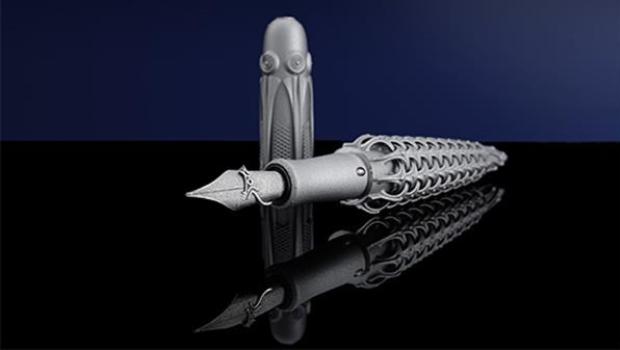According to the latest buzz in the 3d printing industry, a titanium 3d printed fountain pen and nib will be soon launched by a Dutch Designer Rein van der Mast. This pen has been printed on 3d systems and it weighs not more than 32 grams. The length of the pen is 150 mm and diameter is 22 mm.
A similarly stunning 3D printed latticework case, a structure “just doable by 3D printing” van der Mast lets us know, goes with the pen. Past the style of the outline, specialized advantages incorporate a superior firmness to-weight proportion than beforehand observed. Just 100 pens will be produced, accessible for buy in the Netherlands and online for an incredible €2,490.
In 2013, we saw van der Mast discharge the world’s initial 3D printed wellspring pen under his craftsman assumed name, Pjotr. Presently, more than three years after the fact, progressions in 3D printing tech have managed van der Mast new open doors for more intricate outline highlights and mechanical congregations, all in a solitary 3D print. Boss among them is a unique 3D printed nib made of titanium, opening included
Where the customary model has dependably been clear, “it is stunning what one can make by 3D printing,” van der Mast clarifies in a public statement. “I can make extremely complex ink channels and definitely influence the way the nib interfaces with the paper and the pen’s client. What’s more, obviously, along these lines one can likewise make exceptionally complex shapes for stylish reasons.” Artists and calligraphers with a desire for extravagance will cheer.
The 3D printing group will likewise perceive van der Mast as the author of 3D printing consultancy office SOLide, and the Manager of Design and Engineering at the Dutch start-up Additive Industries, a 3D printing organization especially surely understood in the aviation and car fields. After the arrival of his initial 3D printed wellspring pen in 2013, the Cavalry, van der Mast joined the group at Additive Industries as a way to develop his specialized aptitudes in 3D printing. Today, he clarifies that “if there should arise an occurrence of the Spica Virginis configuration has needed over innovation. In 2013 it was a different way.”
